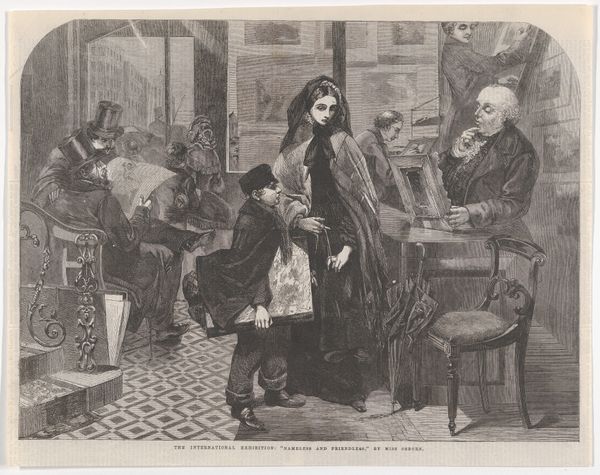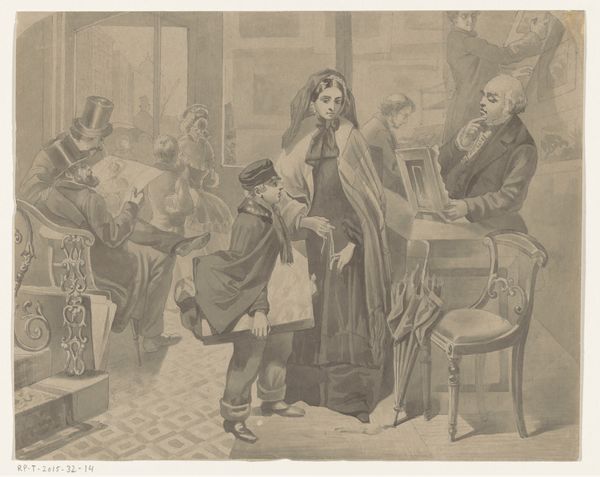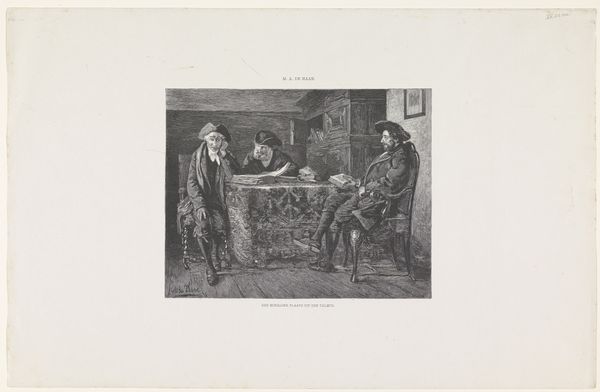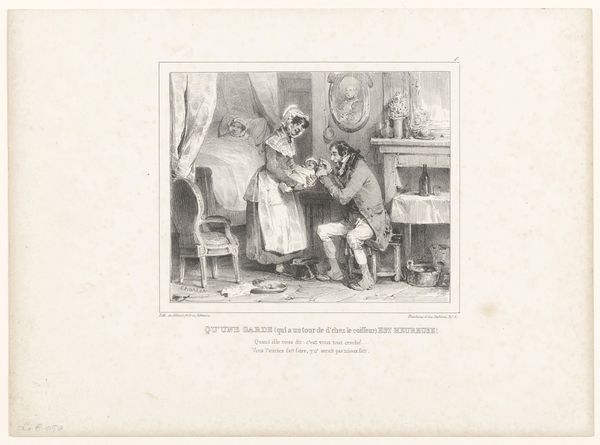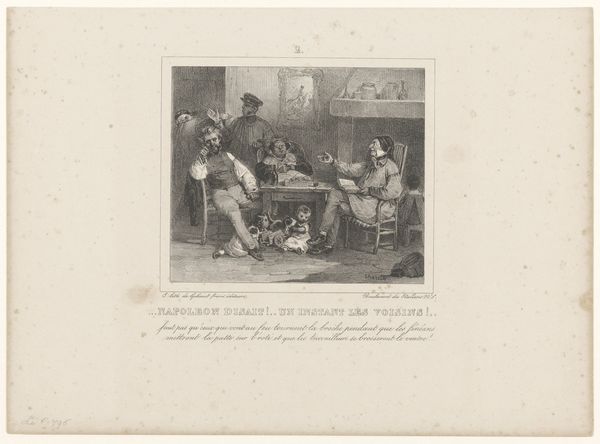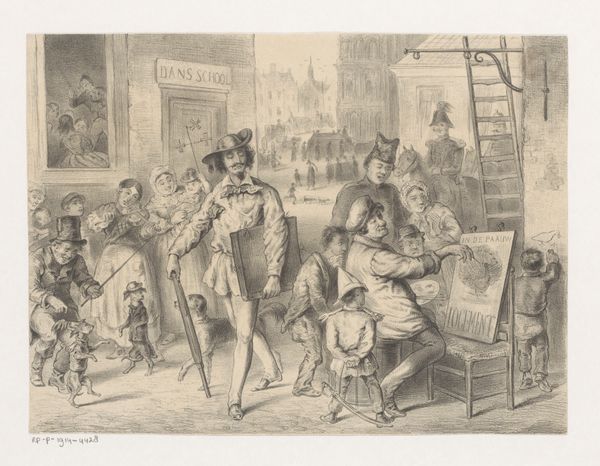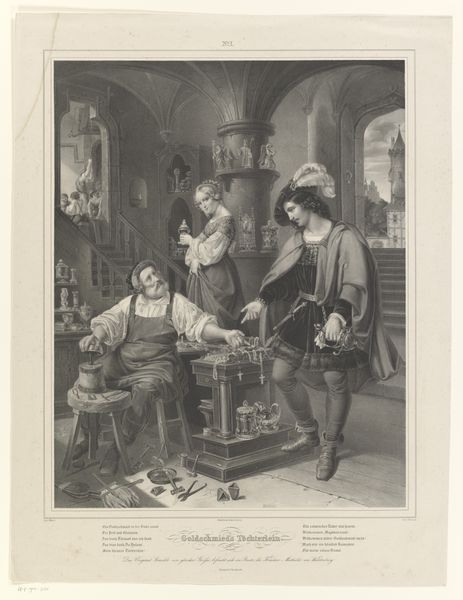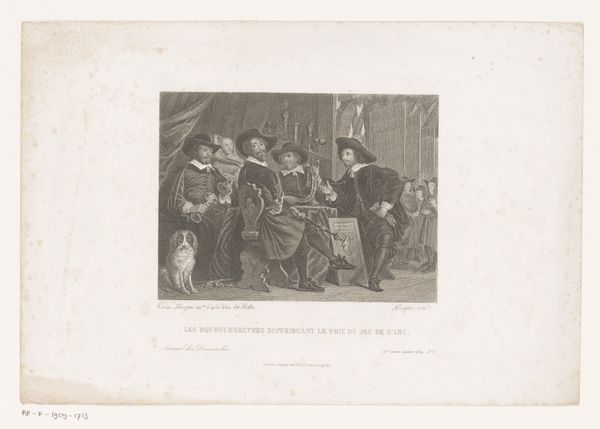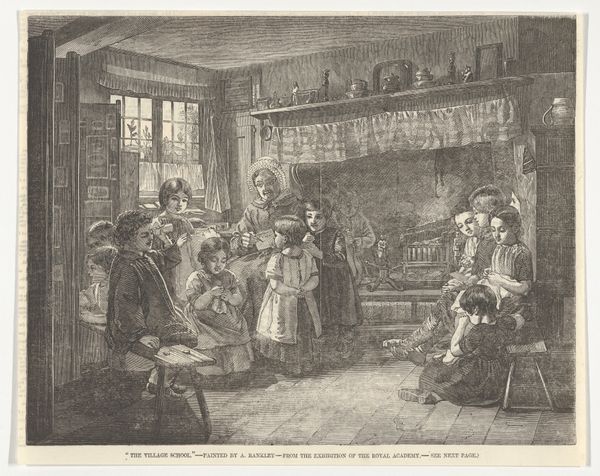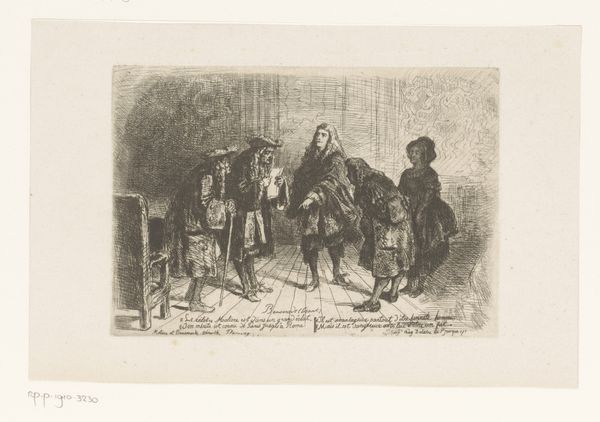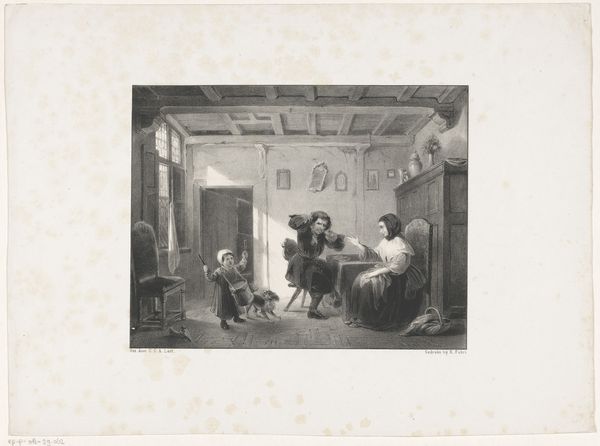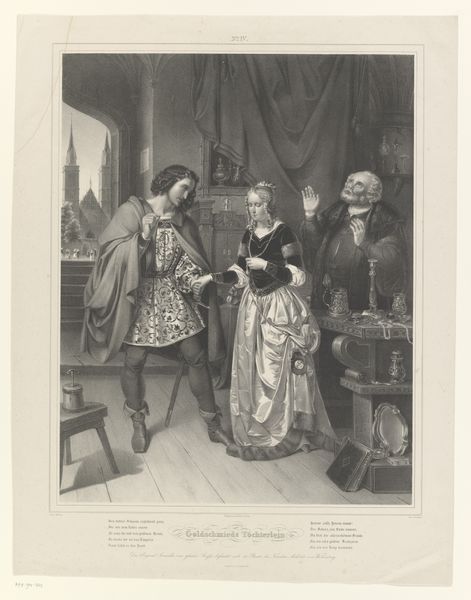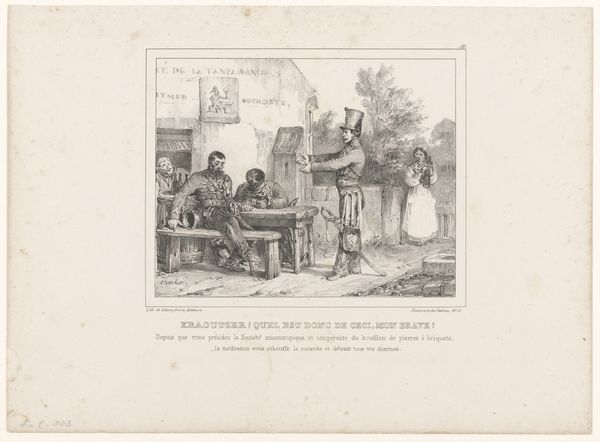
Dimensions: height 145 mm, width 210 mm
Copyright: Rijks Museum: Open Domain
Editor: Here we have "Mother and Son at an Art Dealer’s," a lithograph or etching—the dating is quite broad, somewhere between 1860 and 1907, credited to the Illman Brothers. It's such a busy image, packed with detail! I am really struck by how it portrays a sense of class disparity. What historical narratives do you see playing out here? Curator: It's fascinating to consider this print through the lens of burgeoning art markets. The figure of the "art dealer" itself became significant in the 19th century, influencing both artistic production and consumption. Who had access to art? How were taste and value being shaped by these new commercial forces? Note the clothing of each person - who has money? Who doesn't? Editor: That makes sense. You can almost feel the tension in the air as the mother and son offer their artwork. Are the Illman Brothers critiquing this commercialization of art? Curator: The ambiguity is compelling. On the one hand, there's a degree of social commentary embedded in this genre scene. Prints like this were consumed by a broad public, and shaped perceptions of both artists and the marketplace. Yet, by creating and selling this image, the artists are actively participating in the art market they seemingly critique. How do you interpret that tension? Editor: I never thought of it that way, that they’re both participating and observing. It adds another layer of complexity. Thanks, that was super helpful! Curator: My pleasure. Thinking about the relationship between art, commerce, and social critique in that period can open up interesting insights.
Comments
No comments
Be the first to comment and join the conversation on the ultimate creative platform.
